Congratulations on your immersion in the wonderful world of spinning fishing ! If you are reading this article, you probably decided to try your hand at active hunting for a predator. This is perhaps the most active and “adrenaline” way of fishing, where there is practically no time left for passive waiting – the spinning player is always in action. That is why it is important to choose the optimal spinning rod, because it must correspond not only to the fishing conditions and the chosen bait, but also to the physical condition and preferences of the angler.
Today we will look at the main points of choosing a rod, as well as other elements of equipment. This article is aimed primarily at beginners looking for their first tackle. That is why we will try to avoid very specific terminology and explain difficult points in simple language. We hope this article will help you navigate correctly on your first visit to a fishing store and be critical of the seller’s recommendations. Unfortunately, not all sellers of fishing products have a proper knowledge of the topic.
Here is an overview of the content of this tutorial, feel free to jump to any section you care about:
For more fishing instructions, take a look at these popular Trizily links: Best Spinning Rods, Best Fishing Kayaks.
General principles of selection
Each pro has several spinning rods in his arsenal, equipped for different fishing conditions. The cost of such equipment is many tens of thousands of rubles and not everyone can afford it. It is clear that if a person lives by spinning fishing, he will not buy himself an extra pair of shoes, but he will not regret money for a catchy Japanese wobbler.
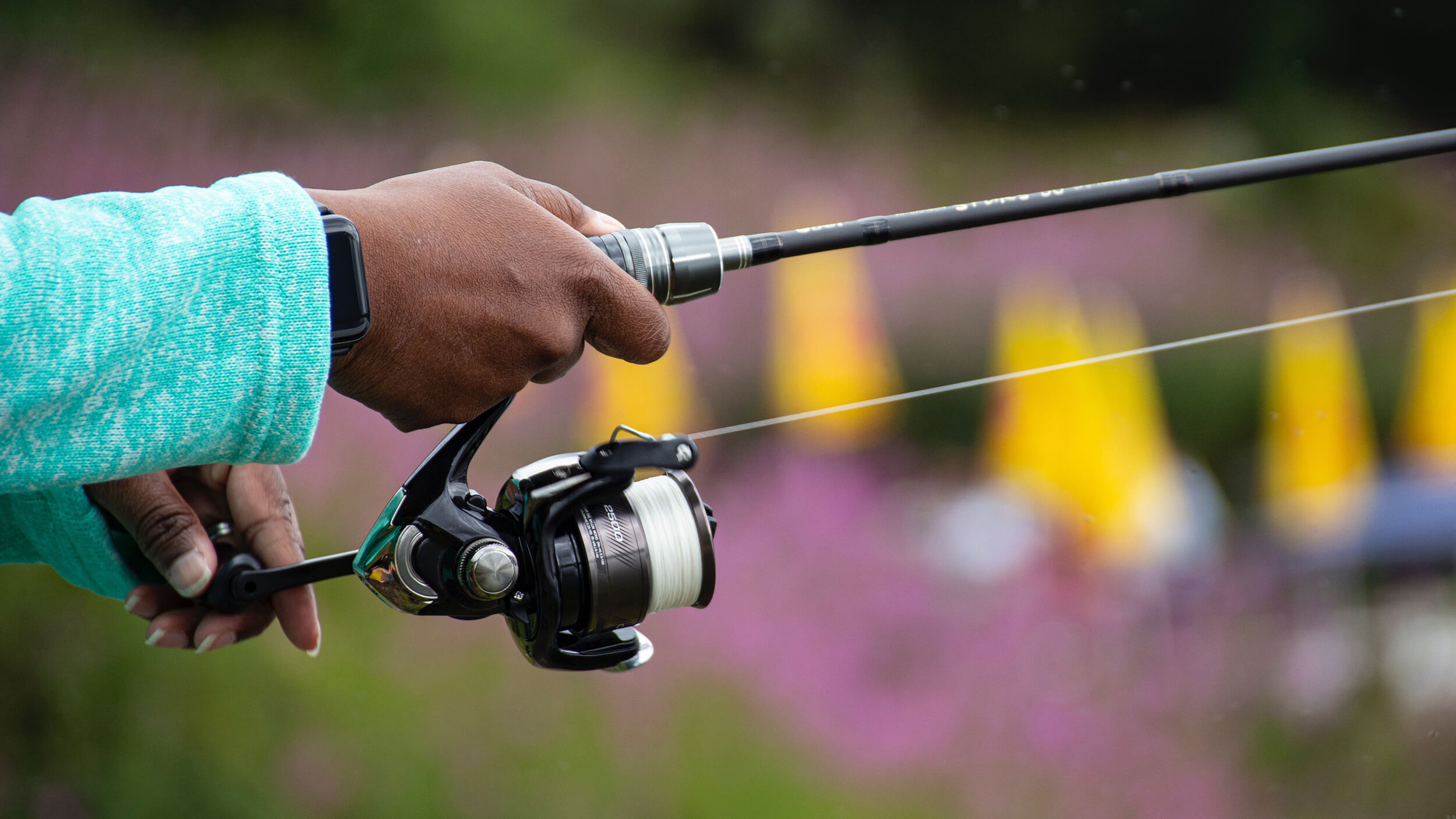
For a beginner who does not have an unlimited budget, this approach is unreasonable: what if spinning fishing will not work for him at all? Maybe after a couple of trips, he wants to retrain in floats or even catch fire, for example, crocheting?
Therefore, for a start, it is better to choose a universal spinning rod that has the widest possible spectrum of action. The following option is justified:
- Length – 2.1-2.4 m . A spinning rod of this length will allow you to comfortably fish from the shore and from a boat, to cast the bait far enough and accurately. But most importantly, such a blank is relatively easy to handle when casting, which by default is the weakest point for beginners.
- Bait test – 5-25 g . This is a medium-light class that allows you to comfortably fish with lures weighing 5-25 grams, that is, the most popular.
- Build – fast . A beginner is advised to focus on the fast or even ultra-fast action form: this will allow better control of the wiring , feeling the movement of the bait and the most delicate bites.
However, if you already have any wishes, you should take into account the specific parameters with regards to:
- Reservoir . Do you intend to fish more often in a small river with a fast current or on a huge lake?
- Fishing conditions . Do you have a boat or will you be fishing primarily from the shore?
- The type of intended prey . Are you focused on lugging around small things (even peaceful ones) or do you want to get decent ones?
- Bait . It is recommended for beginners to master spinning with a “spinner” (uniform wiring) or jig with silicone baits (mostly stepped wiring). Twitching with wobblers is fun, but technically difficult. Think about this moment, because the choice of the optimal tackle directly depends on the type of fishing.
- Own physical condition . Spinning fishing is very labor intensive. The main expenditure of physical strength falls on the stage of casting . Honestly assess your own physical condition and think if you can throw a heavy spinning rod for several hours in a row.
Rod
The main expense item for a beginner spinning player will be the purchase of a rod. A cheap Chinese blank costs in the region of 20-70 dollars, but will catching them be a joy, how long will it last, will it fail at the most crucial moment? Therefore, we recommend focusing on rods of the middle price category, from 70 dollars.
When choosing a spinning blank, we recommend considering the following criteria:
- design features,
- material,
- length,
- test,
- build,
- other parameters.
We will consider each parameter personally, focusing on the current market and fishing trends.
Design
Previously, all spinning sticks were solid (hence, in fact, the name) and were made mainly of light metal. Naturally, transporting long forms was a formidable challenge.
Nowadays, solid rods are also available on the market, but they definitely cannot be called universal. Their length is about a meter, which excludes the possibility of long casting, but allows you to perfectly feel the lure. They are used mainly by athletes and strong pros when jigging on small rivers.
The most common and comfortable to use are plug rods. They consist of two or more sections that are inserted into each other, while the main thing is that the rings are located strictly on the same line. During transportation, the form is dismantled and packed in a special case.
Telescopic rods that fold into the thickest knee have an obvious advantage during transportation (the handle can be either separate or one-piece with a telescopic part). However, they are usually stiffer, less reliable, take longer to assemble, and the rings between the knees wear out quickly.
To begin with, you need to unambiguously choose a plug rod, especially if compactness during transport is not a priority.

Material
Despite the sea of all kinds of trade names of materials, all of them can be conditionally divided into three broad groups:
- Fiberglass . The cheapest material with great weight and rigidity. Spinning reels made of fiberglass do not really pounce on, the wiring is practically not felt, so it can be used, perhaps, for trolling or “track”. They are often chosen for making donuts – fiberglass is cheap, the weight is not important, and it is not necessary to feel the bait.
- Carbon fiber (graphite, carbon) . The most expensive material with excellent performance characteristics (lightness, strength, flexibility). Such rods are marked by the content of graphite: the lower it is (from IM1), the more flexible the blank, which is not always an advantage. The higher the graphite content, the brittle and stiffer the rod, which is also not good. A universal option is the average values in the IM5-IM6 region, which is optimal for the average beginner.
- Composite materials . This beautiful combination hides the alliance of carbon fiber and graphite. In theory, composite materials should have the merits of both materials at an affordable price. However, the manufacturer does not always manage to achieve optimal parity, especially if he does not bother with it. It’s about Chinese consumer goods, of course. But the price pleases.
In the manufacture of premium models, special materials are used with the addition of Kevlar. This significantly increases the strength of the blank without adding extra weight, but the price increases accordingly.

Length
There is a general rule of thumb: the longer the stick, the further you can send the bait on the cast. That is why short spinning rods with a length of 1.8-2.1 m are mainly chosen for fishing from a boat.There, it is not so much the range that is important as the aim of the cast.
If they are fishing on the banks of a large reservoir or a very wide river, the range is already coming to the fore: the bait has to be cast at considerable distances. Therefore, longer forms are optimal for such purposes (2.7-3.0 m, and sometimes even more).
Short spinning rods are easier to handle in every way: from casting to playing. Therefore, it is better to stop at the golden mean of about 2.4 m, and if you intend to fish on a small river or from a boat, then 1.8 m is enough.
Test
Casting or testing is the most serious characteristic of a rod that determines its class. It is set by the weight of the bait (more precisely, the interval between the minimum and maximum mass), which can be used when fishing with this blank.
There are seven main classes of rods (they are marked with the corresponding markings):
- Ultralight (UL) . The lightest baits, weighing up to 1-7 grams. A very sensitive tackle for catching small things.
- Light (L) . “Pure” light class, baits weighing 3-10 grams. Lightweight spinning rod for catching medium-sized peaceful fish, grass perch and so on.
- Medium Light (ML) . Perhaps the most versatile tackle, suitable for predator prey in almost any conditions. The weight of the bait can range from 5-25 grams.
- Medium (M) . The top bait test is usually limited to 30 grams, the bottom 7-10 grams. A fairly powerful tackle suitable for catching humpback perch, large pike perch, pike, salmon and other solid predators.
- Medium Heavy (MH) . Medium weight trophy fishing rod. Bait test – 15-40 grams. It is mainly used for long-distance fishing from the shore or for trolling (track) in fresh water.
- Heavy (H) . Heavy rod, sharpened for hunting trophy predators (for example, catfish), trolling in fresh water and sea. The lower limit of the bait weight is 30 grams, the upper limit is 60.
- Extra Heavy (EH) . Super heavy trolling rods. The bait test exceeds 60 grams.
Rod power (class) is designated by Roman numerals I-IV. This characteristic also directly depends on the weight of the bait.
What happens if you use a bait that’s lighter than the lower end of the range? It will not allow the rod to work properly on casting (the bait will definitely fly away not far, and the aiming will suffer). When wiring, the spinning player simply will not be able to animate the bait with high quality, since he will not feel its movements.
Using a heavier bait, whose weight goes beyond the upper limit of the test, will sooner or later lead to breakage of the tackle, especially if it is in the hands of a beginner. Experienced spinners sometimes use heavier wobblers, jig heads and lures than allowed by the test. However, they usually have very high-quality forms in their hands, and in the arsenal – the skill gained over the years.

Build
Another important characteristic of the blank is its structure, that is, the ability to bend along a parabola. It is usually indicated by the manufacturer, but it is easy to investigate and independently – just swing the whip with force (as in a cast). Both the casting style and the tactics of playing fish depend on the tuning.
Let’s dwell on the generally accepted American classification of blanks in order:
- Extra Fast (EF) . Super fast action. The blank bends mainly in the upper quarter. Suitable for handling ultralight lures, fishing for small fish.
- Fast (F) . The fast action blank bends mainly in the upper third. A universal option for catching a medium-sized predator.
- Moderate (M) . Medium system. The rod bends up to half. Gives very long casting while maintaining accuracy. Suitable for catching large enough fish.
- Slow (S) . The slow action rod is ideal for trophy fishing. It bends in a parabola along its entire length, which reduces the load on the line and makes it possible to play very large specimens, including catfish.
For a start, it is better to take a fast action form: this way you will feel the wiring better, and for playing quite decent specimens (2-3 kg) it is quite enough.
A small nuance: even a good “telescope” rarely produces a uniform bend, which is so highly valued by experienced spinning players. That is, this is another argument in favor of the plug.
Other parameters
Pay attention to rods of famous brands: it is definitely not worth taking absolutely cheap stuff. The rod should be free of any visual defects and indistinctly printed characteristics. Further, it is worth focusing on the following points:
- Lead rings . The line guides should be perfectly smooth (you can check them with your finger for burrs). An insert should be located along the inner circumference of them, which protects the fishing line from abrasion. Previously, premium models were equipped with ceramic inserts, now they are made mainly of aluminum oxide (color – dark brown). A cheaper option is sitalocement, which has a peculiar purple hue. Make sure that the inserts do not twist inside the rings. Particular attention should be paid to the “tulip” – the last ring on which the maximum load falls. On it, protection should be located not only inside, but also outside. By the way, it is worth choosing a spinning rod with rings on one leg – they have less influence on the action of the blank than the classic “two-legged” ones.
- Spool seat . Check the tightness of the reel seat. In classic versions, the clamping nut is located at the back, in modern versions it can also be located in the front. This is a matter of taste – both options are acceptable. For closed inertialess of large capacity and multipliers, reel seats with special triggers are produced. Ideal for trophy fishing, especially unnecessary for a beginner.
- The handle . Spinning rods are one-handed and two-handed – depending on the length and design of the handle. One-handed are mainly short lights and ultralights designed for one-handed casting. Among the materials, the good old cork still occupies the first place, but the modern artificial polymer EVA, which is a porous rubber, successfully competes with it. Sometimes there are spinning rods with handles covered with natural leather.
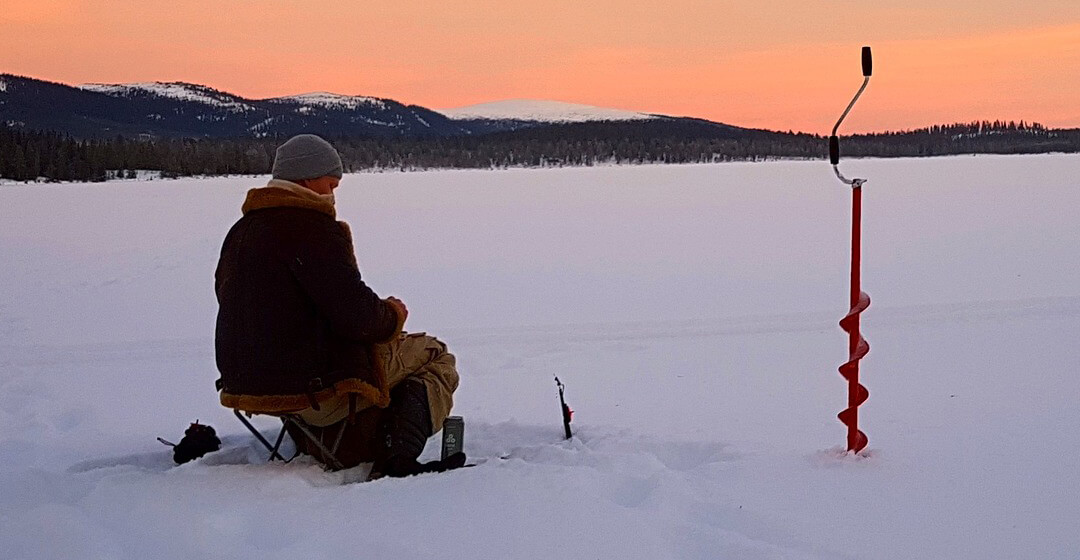
Reel
Classic inertial reels are practically not used in modern spinning fishing. Their natural evolution is the baitcasting reels, but they are usually only installed on heavy and super heavy blanks and are used for trophy fishing and trolling. They are very expensive, differ in their large weight and are definitely unnecessary for a beginner spinning player.
The choice of a beginner is definitely a good inertia. Its main characteristic (spool capacity) will be indicated in the rod specification. The most common classification according to this parameter is introduced by the world renowned reel manufacturer Shimano. It shows how much line of a certain thickness the spool can hold. For example, a reel for 1000 holds 100 m of line with a cross section of 0.1 mm, for 2000 – 100 m of line with a diameter of 0.2 mm, and so on. In most cases, for light and medium light, they take reels for 2000-2500.
In addition, you should pay attention to the following points:
- Number of bearings . In principle, the more the better, but with each bearing the cost of the reel increases. Therefore, a model with 4-6 bearings is enough for a beginner. They must be present on both sides of the handle shaft, on the rotor and on the line guide roller. The gear ratio is 4: 1 or 5: 1.
- Spool material . Metal is preferred – the plastic will wear off the braid quickly enough. The presence of an additional spool is a nice bonus from the manufacturer.
- Friction clutch . The presence of a clutch is required, and it is also important to set it up correctly . It can be rear (reliable, but significantly heavier the structure) or front (light and easy to handle, but wears out quickly).
When choosing, pay attention to the integrity of the elements and the quality of the inscriptions – they certainly should not be erased with a finger.
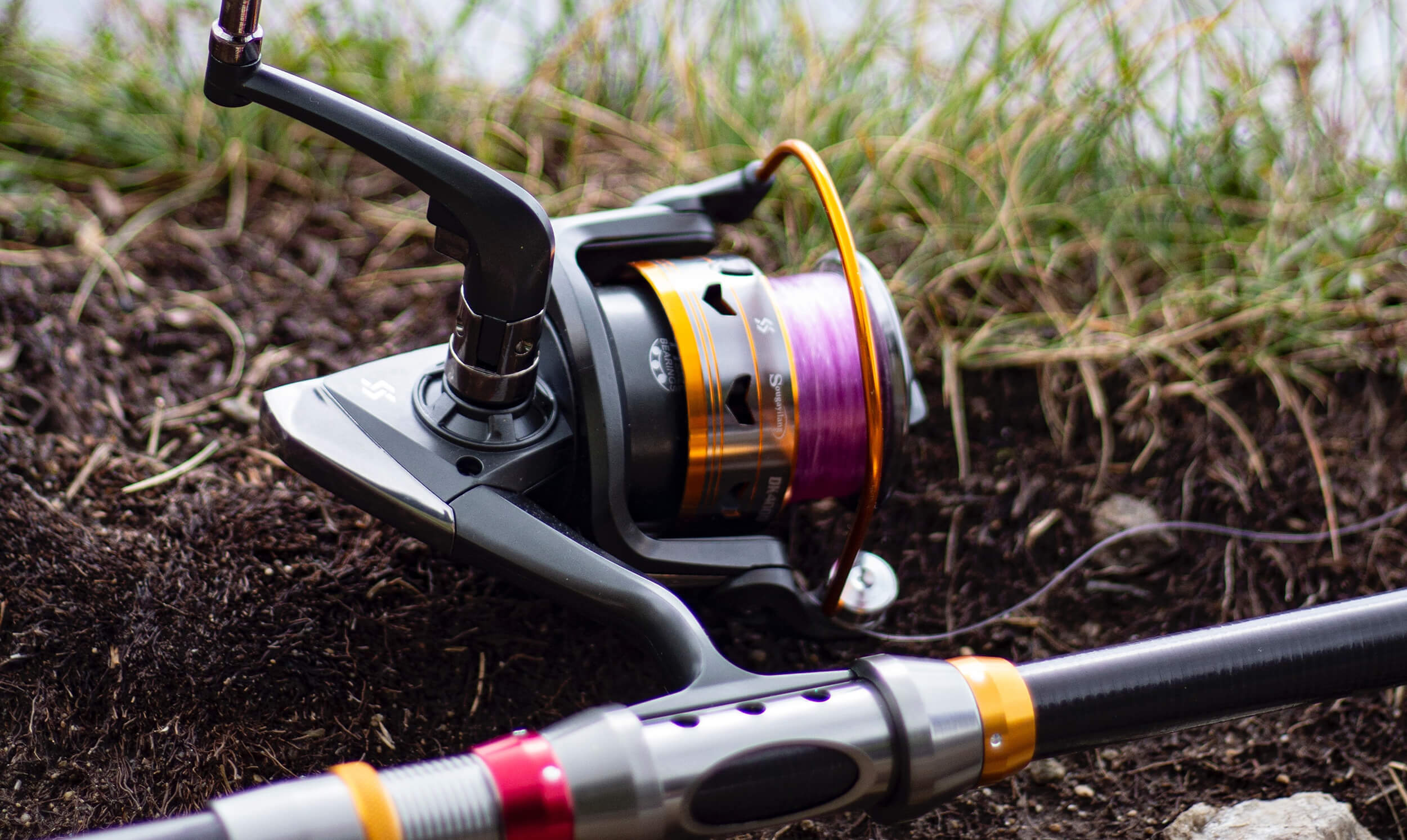
Fishing line
In spinning fishing, both a classic monofilament line (monofilament) and a braided line are used. The line is selected for the parameters of the spinning rod and reel, guided by the manufacturer’s instructions.
Monofilament is always cheaper, due to its extensibility it dampens fish jerks well, reducing the load on the rod. However, extensibility has a downside: through monofilament, the bait is poorly felt, and at long distances it is not felt at all.
Braided cord is more expensive. It practically does not stretch in water, which contributes to the transfer of the movements of the bait and the most delicate bites on the hand. It has about twice the tensile strength of monofilament of the same diameter. True, it is soft, which contributes to the formation of “beards”.
It is better for a beginner to opt for a braid with a diameter of 0.08-0.12 mm. But again, do not lose sight of the parameters specified by the manufacturer (they are calculated depending on the rod test). If you put on the reel a thicker and more durable fishing line than the manufacturer recommends, when you catch a large specimen, you risk breaking the tackle, and the nuances in fishing are inevitable.
Leash
The use of a protective leash is mandatory only in one case: if you do not exclude the possibility of catching a pike. Other representatives of the predatory ichthyofauna do not bite the line. Many anglers prefer to go without leashes, believing that their presence negatively affects the animation of the bait. But for a beginner who does not yet have a narrow specialization and experience, it is better to use them.
Leashes are:
- Fluorocarbon . They are usually made on their own, but recently, ready-made leashes from fluorocarbon fishing line have appeared on the market. Unfortunately, they are powerless against the teeth of a mature pike, but they have another advantage: fluorocarbon is practically invisible in the water, which is ideal when fishing for passive fish.
- Metallic . The material for such leads is a thin steel wire (like a guitar string). The metal leash is guaranteed not to bite the pike, but it will bend it instantly. It is unlikely that it will be possible to straighten it perfectly, so you need to have a fair amount of these elements of equipment – a deformed leash is not suitable for fishing.
- Metal in nylon . A metal leash placed in a nylon braid costs a little more, but does not bend as much. Perhaps it can be called the best option for a beginner.
- Titanium . A very durable and at the same time plastic material, which practically does not undergo deformation. It has only one serious drawback – the high price.
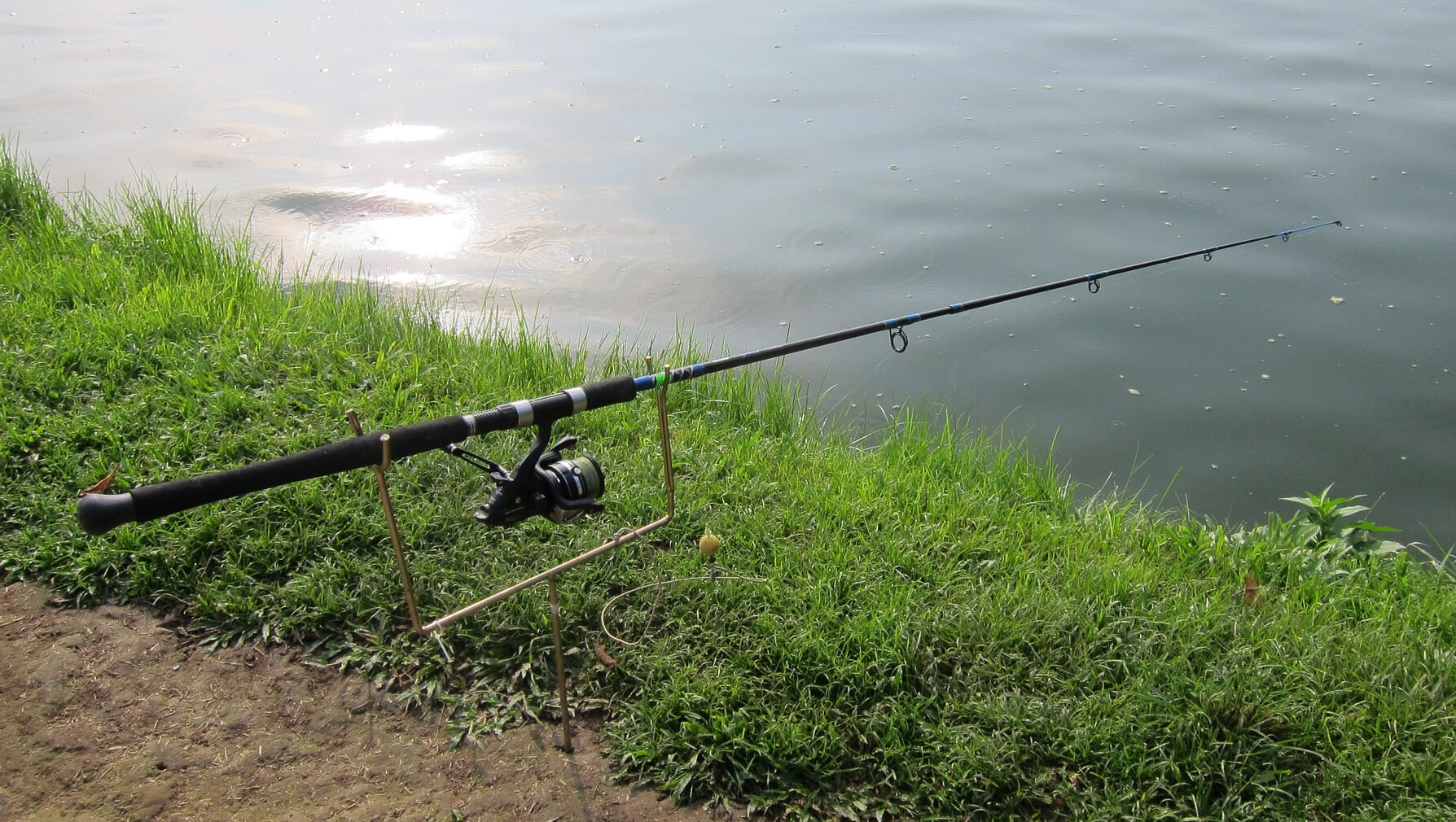
Bait
All artificial spinning lures can be divided into three broad groups:
- Spoons . These are metal lures of predominantly flattened shape. True, there are devons, jigs and other exotics, which are unnecessary for a beginner. All flat lures can be divided into spinning and oscillating. Spinning with a “spinner” is perhaps the ideal option for a beginner spinning player – only casting and the simplest uniform wiring will have to be mastered.
- Silicone baits . They are made of soft artificial polymer (silicone) and in shape can resemble miniature fish, newts, worms, larvae and other inhabitants of the reservoir. They are usually used in tandem with jig heads or attached to a special offset hook (in this case, they are often used with a sinker located on a diverter leash). As a rule, fishing with silicone lures is called a jig. The stepped wiring used in the classic version is not too difficult to master.
- Wobbler . This is the widest class of hard baits, made mainly from a variety of hard polymers. Fishing with a wobbler is called twitching. It is the most difficult, it requires total control of the bait, so it’s definitely not worth recommending to beginners.
The choice of spinning rod for specific fishing conditions
Now let’s figure out the specific fishing conditions and try to choose a tackle specifically for them:
- Big river (channel width – over 100 m), bank, medium and large fish. Fast or super fast action rod, light medium or medium class, length 2.7-3.0 m.
- Small river, shore, small and medium fish. Light or ultralight, fast and ultra-fast action, length 2.1-2.4 m.
- Large body of water, shore, large and medium fish. Medium light or medium, medium fast or medium action, length from 3 m.
- Pond without current, boat, medium and large fish. Light medium or medium, medium or medium-fast action, length 1.6-2.1 m.
- Considerable depth, boat, medium and large fish. Fast or medium-fast action, medium, length 2.1-2.4 m.
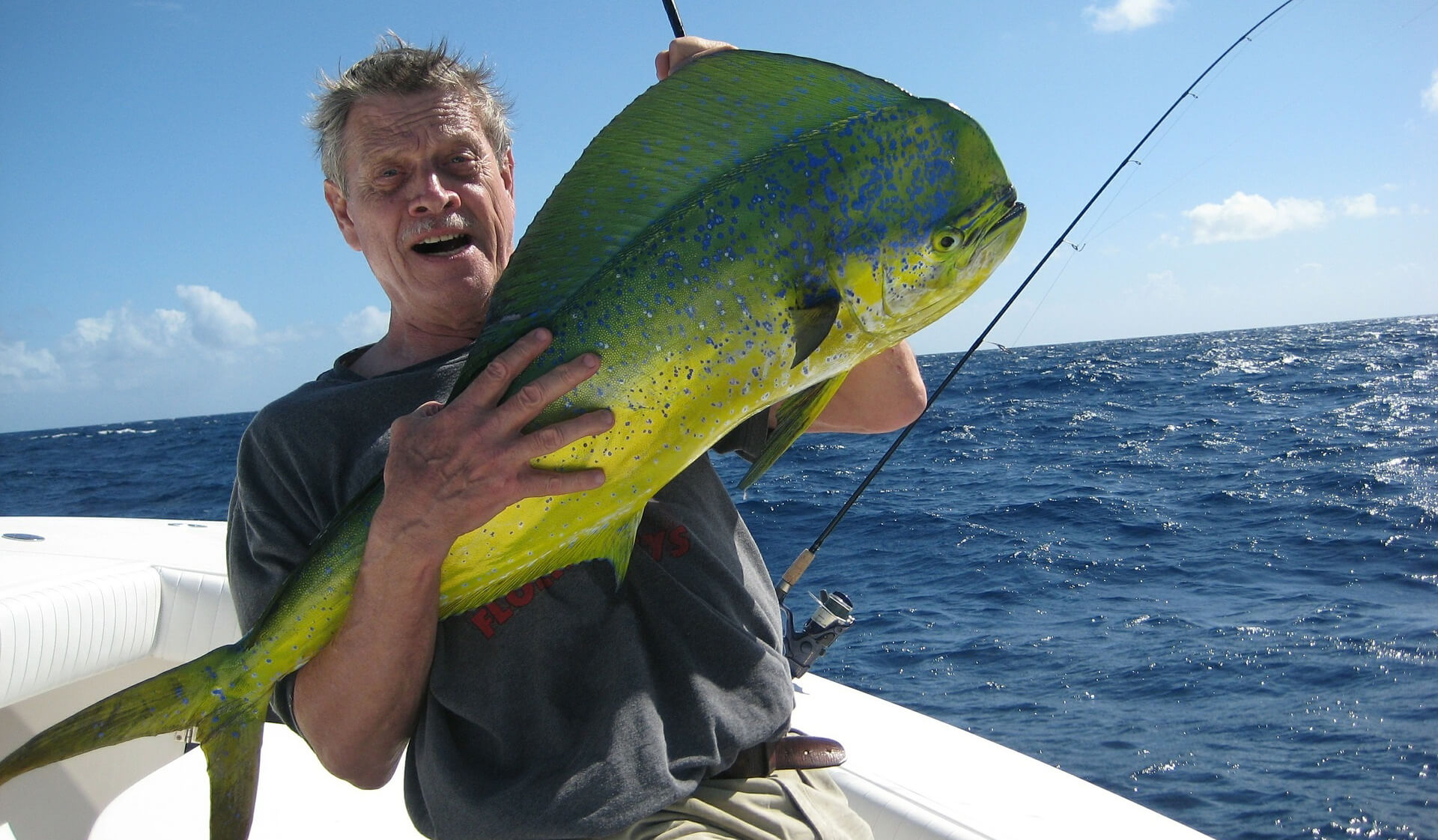
Tips for beginners
We will assume that we have already covered the main aspects of the choice of tackle, the matter is small – practical recommendations:
- Don’t go beyond the test . Buy everything at once: a rod (plug medium light, 2.1-2.4 m long, fast action), a spinning reel for 2000-2500, a cord with a diameter of 0.08-0.12 mm, a lure of the appropriate weight and class. Look for a good, highly specialized store where the salesperson really has the information and is able to give good advice.
- Beware of counterfeiting . Good tackle cannot be cheap. A graphite rod for 30 dollars and a Shimano reel for 20 dollars are clearly counterfeit, a cheap fake.
- Fill the bobbin with line up to the edge . In order for the inertia to work 100%, the spool must be filled with a cord almost flush with the board (2-3 mm lower). If you are sorry for the money for an expensive cord of the appropriate length, you can use backing (reeling from a cheaper fishing line or a cord that has served its day). Backing is wound under a working cord.
- Adjust the clutch correctly . This mechanism protects the tackle from breakages and breaks, extinguishing fish jerks by releasing a certain amount of fishing line. The friction clutch is adjusted depending on the breaking load of the line. For example, if it is 7-8 kg, the clutch is adjusted with a margin of 4-5 kg. For this, it is better for a beginner to use a load of the corresponding mass (we fix the load on the line, clamp the clutch to the maximum, pull it towards ourselves, smoothly release the clutch to the ratchet). But experienced anglers do it right on the fishing trip, fixing the bait, for example, on a tree: they are guided by sensations.
- Expand your arsenal over time . If spinning fishing “suits you”, expand the arsenal of rods and other accessories for different fishing conditions.
We hope that you will have a high-quality and optimally equipped spinning rod in your hands, and you will enjoy the very first trips to the pond!

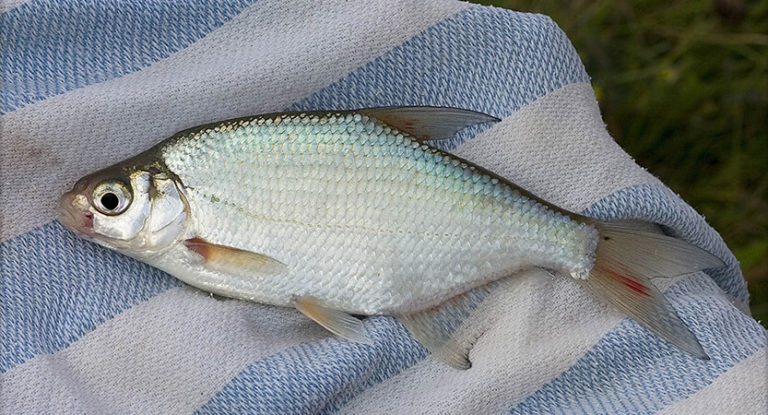
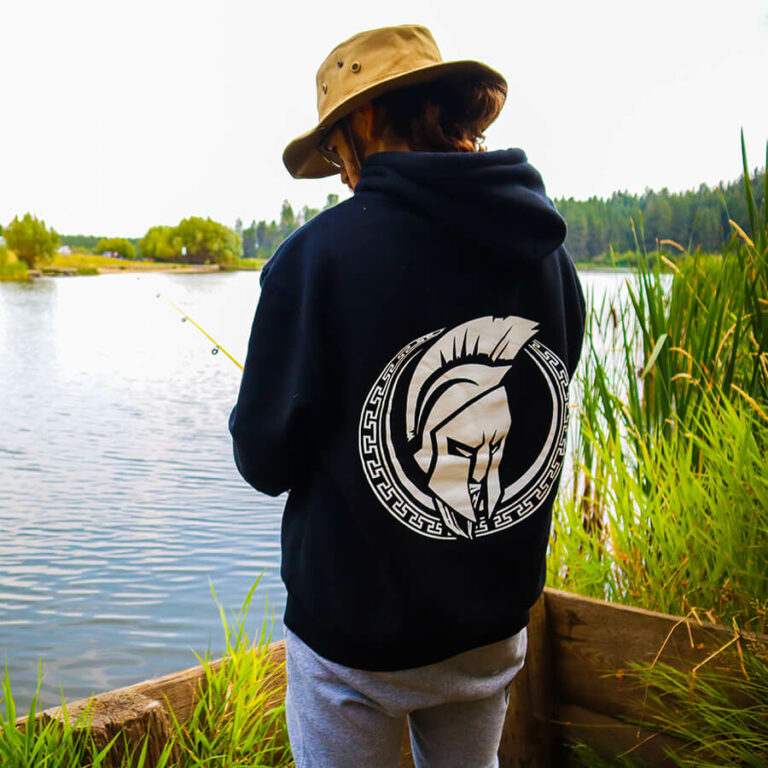
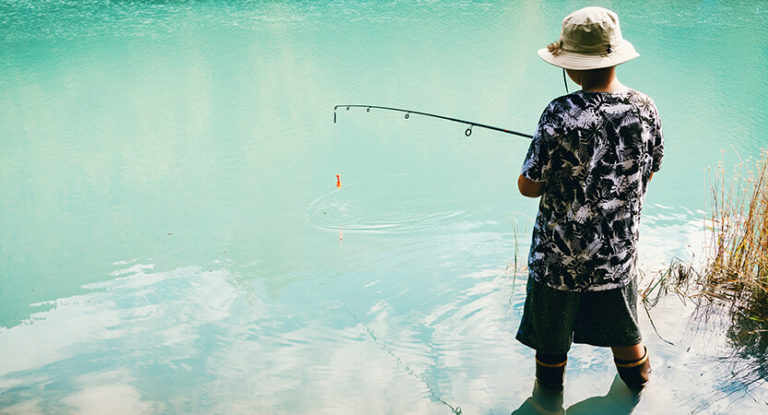
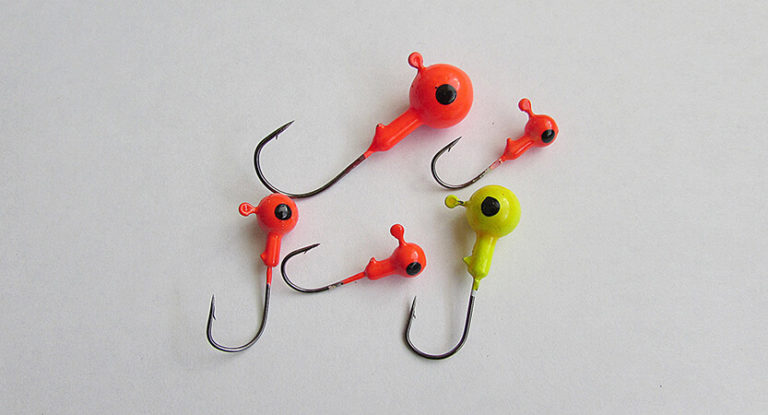
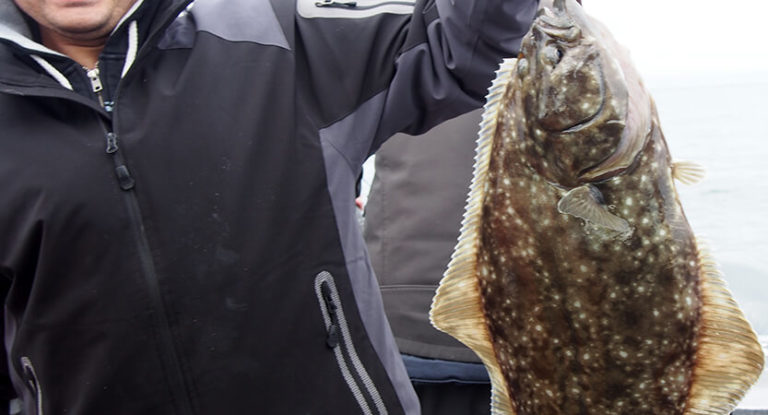
![The 10 Best Fish Finders 2024 [Reviews and Comparison] 24 The 10 Best Fish Finders 2024 [Reviews and Comparison]](https://trizily.com/wp-content/uploads/2021/12/best-fish-finders-768x415.jpg)